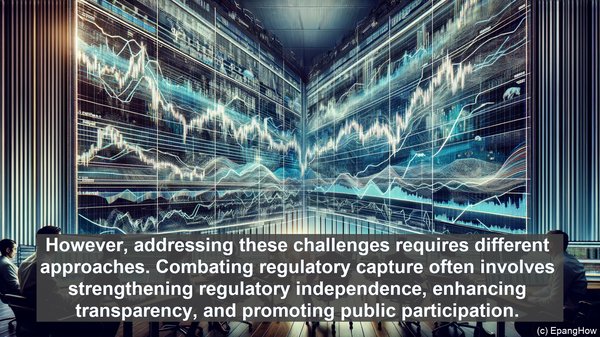Introduction: Navigating the Complexities of Governance
Hello everyone! Welcome to this insightful article on the intricacies of governance. Today, we’ll be exploring the contrasting concepts of regulatory capture and government failure. While they might seem similar at first glance, a closer examination reveals their unique characteristics and implications. So, let’s dive in!

Regulatory Capture: When the Regulated Influence the Regulator
Regulatory capture refers to a situation where a regulatory agency, tasked with safeguarding public interest, ends up being unduly influenced by the very entities it is meant to regulate. This influence can manifest in various forms, such as lobbying, financial incentives, or even the promise of lucrative post-regulatory employment. As a result, the regulatory agency’s decision-making process becomes skewed, often prioritizing the interests of the regulated industry over the broader public interest. This can lead to compromised regulations, inadequate enforcement, and ultimately, a loss of public trust.
Government Failure: The Challenges of Effective Governance
On the other hand, government failure refers to situations where the government, as a whole or in specific departments, fails to achieve its intended objectives or deliver public goods efficiently. This can occur due to a range of factors, including bureaucratic inefficiencies, corruption, or inadequate policy design. Unlike regulatory capture, government failure is not limited to the regulatory domain but encompasses broader governance issues. It can result in suboptimal outcomes, such as wasteful spending, policy inconsistencies, or even the inability to address pressing societal problems.

Distinguishing Factors: The Key Differences
While both regulatory capture and government failure involve deviations from the ideal governance model, they differ in several crucial aspects. Firstly, regulatory capture is often driven by the actions of private entities, whereas government failure can stem from internal factors within the government itself. Secondly, regulatory capture primarily affects the regulatory process, leading to biased decision-making, whereas government failure can impact various aspects of governance, including policy formulation, implementation, and evaluation. Lastly, regulatory capture is often driven by specific interests, such as those of a particular industry, while government failure can have broader systemic causes.
Implications and Remedies: Addressing the Challenges
Both regulatory capture and government failure have significant implications for society. They can erode public trust, undermine the effectiveness of regulations, and hinder the achievement of policy objectives. However, addressing these challenges requires different approaches. Combating regulatory capture often involves strengthening regulatory independence, enhancing transparency, and promoting public participation. On the other hand, addressing government failure necessitates reforms in areas such as bureaucratic processes, accountability mechanisms, and policy evaluation frameworks. A comprehensive approach is crucial, considering the interplay between these two phenomena in the governance landscape.
